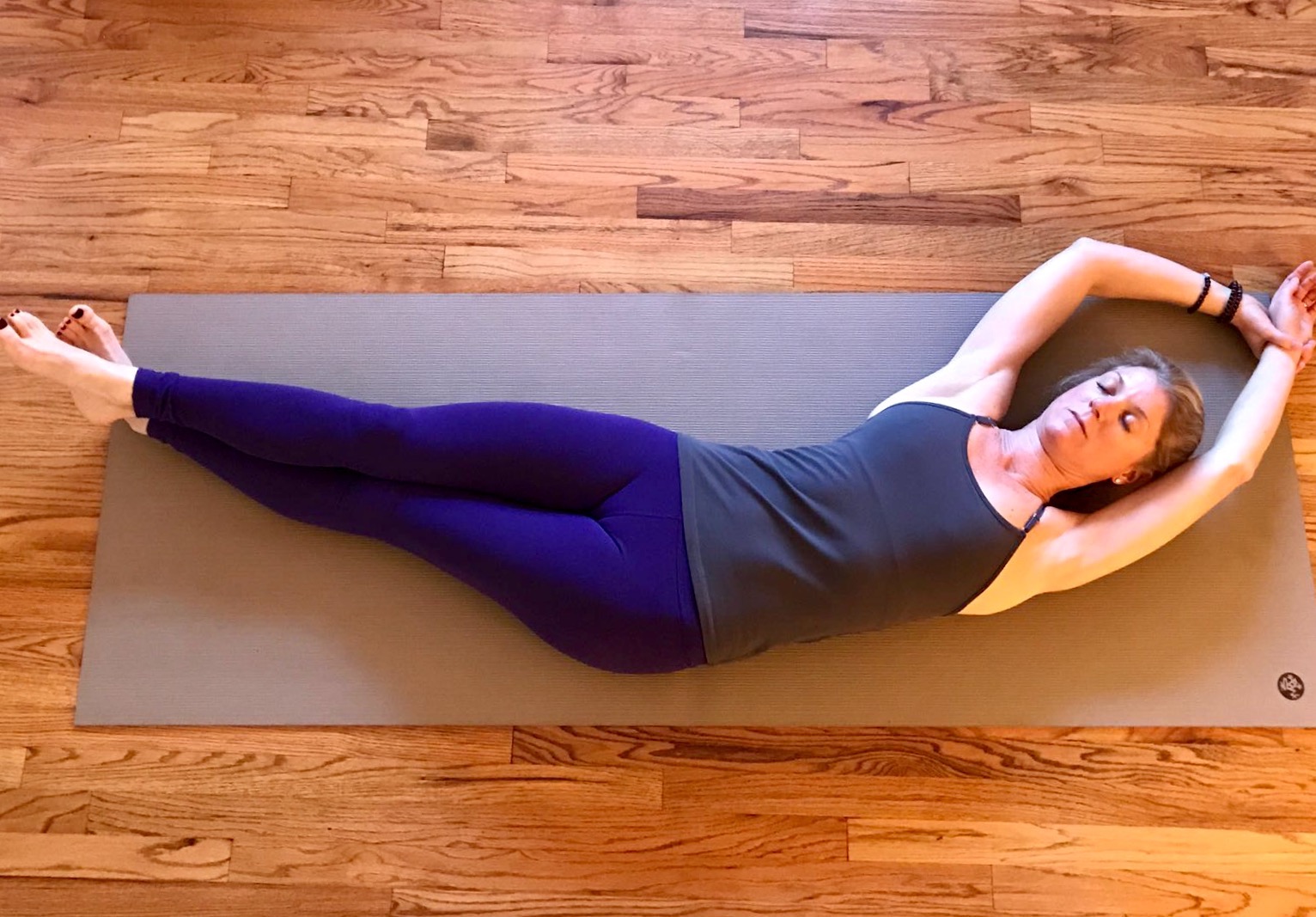
14 Feb Yin is In
As the world seems to move faster and faster, fueled by a never ending stream of information that is constantly available through our mobile devices, there is a need to slow down. Even in people’s yoga practice – that is intended to relax the body and calm the mind – there is often a striving to look and be a certain way, fed by social media and other external factors. Many people are exhausted and are looking for different ways to enhance their well-being, or so it seems. The quiet practice of Yin Yoga is one of the answers; no matter where I teach (whether in New Jersey, Amsterdam or Norway) my classes are packed.
Yin Yoga is a practice that allows us to reach the deeper layers of the body: fascia and connective tissue. Fascia, which means “band” or “bandage”, is what holds us together. Fascia creates a web – or matrix – that integrates the inside of our body; it envelops our bones, muscles and organs. The deep fascia embeds the tissues of our muscles, our blood vessels, and all other tubes that wind through our body. Thirty percent of our muscles is made up of fascia. It is the fascia that merges our muscles with our bones through the tendons, as nothing is separate. When we move one part of our body it pulls on the web of fascia connected to the whole body, resulting in movement in another part of our body. With practice we not only learn to feel these subtle movements, but specifically a Yin Yoga practice will enhance our range of motion in a effective, lasting and unprecedented way.
The ligaments that hold our bones together are made up of connective tissue. Connective tissue is meant to restrain our movements. Yet when these tissues become too restraining – caused by a lack of use and/or aging – they will limit our range of motion to the point we become stiff. Or worse: we become immobile. Since connective tissue is quite inelastic, we cannot exercise these tissues like muscles that respond well to dynamic movement. We need to gently and skillfully work with our ligaments in a safe way, such as a Yin Yoga practice. By emphasizing gentle pressure, shear and pulling on the connective tissue (and fascia), we can increase production of synovial fluid in the joints and so improve flexibility, which enhances our ability to move more easily and gracefully.
Yin Yoga is practiced by holding seated and supine postures for 3 – 5 minutes. Yin Yoga poses don’t require balance or muscular effort, so virtually anyone can do it. This practice is very different from Restorative yoga, however. Where Restorative Yoga is intended to calm the nervous system and rehabilitate injuries by supporting the body with different kinds of props, Yin Yoga invites us to slowly and gently stretch our tissues in a very deep way.
The practice of Yin Yoga has many benefits, not only on a physical but also on an emotional and mental level. The practice has a direct positive effect on the health of our organs, as each pose stimulates the flow of Chi (or: Life Force) through the respective meridians (energy channels), resulting in increased vitality. By holding the Yin Yoga poses for several minutes, we have ample time to practice specific breathing patterns (Pranayama). Pranayama enhances our breath awareness, soothes the nervous system, and so relaxes the body and calms the mind. The stimulation of the meridians while we practice Yin Yoga also regulates our emotions. The practice can teach us how to host our emotions without attaching to them. By holding Sleeping Swan pose (Pigeon pose, in Yang yoga) for 5 minutes, for example, we may experience feelings of rage or irritation, as this pose stimulates the liver meridian that is connected with the emotion of anger. Yet, when we simply allow these feelings to be there, without attaching a story or trying to make them go away, we can learn to be with what arises before us without reacting to it.
We aim at being still in each Yin Yoga pose. First time students therefore often think that this is an “easier type of yoga” that is good for beginners. Yet, once in a posture one quickly realizes that not moving can be quite challenging. It seems counter-intuitive that a passive practice is actually so rewarding, and the feeling that we need to do something may arise. As such, the Yin practice encourages us to let go and accept each moment as it is without needing to change it. Thus, Yin Yoga is a great doorway into meditation, and is particularly suited to the practice of Mindfulness meditation. This method of meditation leads to more mental clarity, and to an insight into our inner and outer world without judging. The stillness during our practice enhances our productivity once we step off the mat.
In summary, by doing less – to be quiet in our postures for 3 – 5 minutes each -, we actually achieve more. Better health and a quiet mind will go a long way. And suddenly it will seem as if the world around us moves a little less fast.